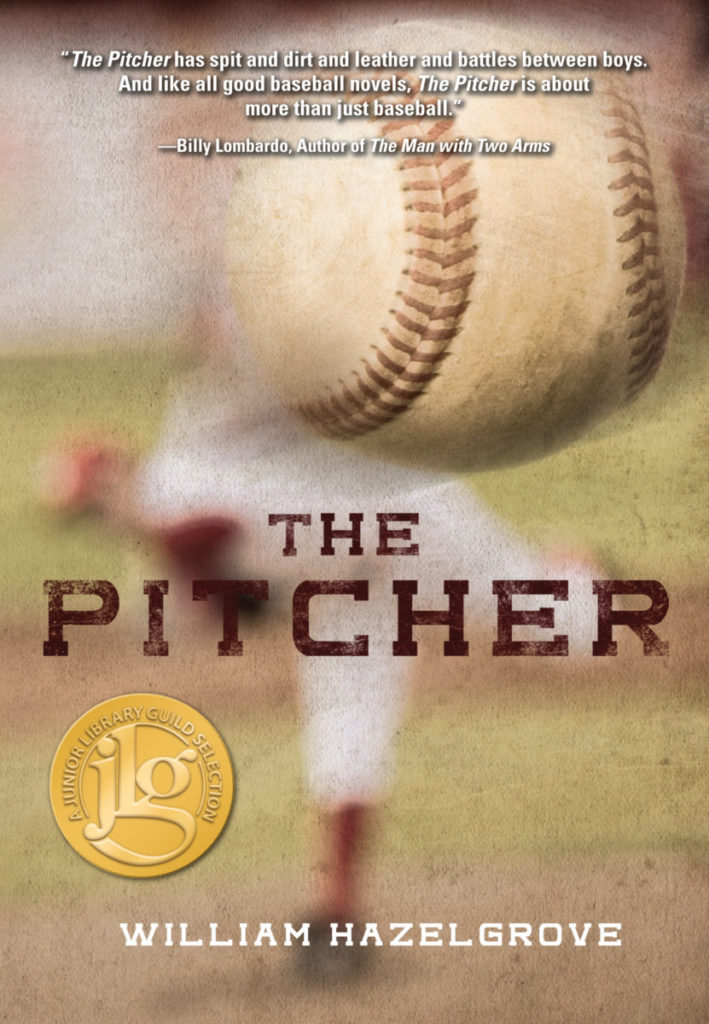 William Hazelgrove is the National Bestselling author of ten novels and three nonfiction titles: Ripples, Tobacco Sticks, Mica Highways, Rocket Man, The Pitcher, Real Santa, Jack Pine, The Bad Author, My Best Year, The Pitcher 2, and Madam President: The Secret Presidency of Edith Wilson, Forging A President: How the Wild West Created Teddy Roosevelt, and Al Capone and the Worlds Fair of 1933. His books have received starred reviews in Publisher Weekly and Booklist, Book of the Month Selections, ALA Editors Choice Awards Junior Library Guild Selections Literary Guild Selections, and sold to the movies. He was the Ernest Hemingway Writer in Residence where he wrote in the attic of Ernest Hemingway’s birthplace. He has written articles and reviews for USA Today and other publications and has been featured on NPR All Things Considered. The New York Times, LA Times, Chicago Tribune, USA Today have all covered his books with features. He runs a cultural blog, The View From Hemingway’s Attic. He lives in Chicago.
William Hazelgrove is the National Bestselling author of ten novels and three nonfiction titles: Ripples, Tobacco Sticks, Mica Highways, Rocket Man, The Pitcher, Real Santa, Jack Pine, The Bad Author, My Best Year, The Pitcher 2, and Madam President: The Secret Presidency of Edith Wilson, Forging A President: How the Wild West Created Teddy Roosevelt, and Al Capone and the Worlds Fair of 1933. His books have received starred reviews in Publisher Weekly and Booklist, Book of the Month Selections, ALA Editors Choice Awards Junior Library Guild Selections Literary Guild Selections, and sold to the movies. He was the Ernest Hemingway Writer in Residence where he wrote in the attic of Ernest Hemingway’s birthplace. He has written articles and reviews for USA Today and other publications and has been featured on NPR All Things Considered. The New York Times, LA Times, Chicago Tribune, USA Today have all covered his books with features. He runs a cultural blog, The View From Hemingway’s Attic. He lives in Chicago.
Q: What is your #1 piece of advice to an aspiring writer?
Always finish your first draft first. Never go back until you reach the end. Then rewrite until you cannot make it any better. Then move heaven and earth to get it published.
Q: What are the top 1-3 things you would tell a new author to do with regards to marketing?
Use social media as much as you can tolerate. Do as many signings as possible and never sit behind the table. Never touch the chair. Have a card to give every person with a picture of your book. Always be selling. Never give up.
Q: How do you manage your time between marketing and writing?
It is hard but I try and put a wall between the two. When I market for a book that is all I do. When I write that is all I do. But if I have to split it then I write in the morning and sell in the afternoon. The point is to always be producing your next work.
Q: What process do you go through to prepare your work before sending it to an agent or editor?
I rewrite as much as possible and smooth it out until it really cannot get any better.
Q: The Pitcher is perhaps your best-known book, and we know that you have a movie deal in the works. Often the arc of a novel’s life peaks early and then falls off. To what would you credit the longevity of The Pitcher’s success?
The Pitcher is unique. It is that rare little story that keeps finding new readers. It has kept selling because it is almost a perfect egg, lean, tight, emotion packed, and with a heart. You can only pull that off once really. It is a strange amalgam of a good story and style that fit the story with a very strong first person narration. I rewrote that until my computer melted. And then I rewrote it again.
 “I never knew I had an arm until this guy called out, “Hey you want to try and get a ball in the hole, sonny?” I was only nine, but mom said, “come on, let’s play.” This Carney guy with no teeth and a fuming cigarette hands me five blue rubber balls and says if I throw three in the hole we win a prize. He’s grinning, because he took mom’s five bucks and figures a sucker is born every minute. That really got me, because we didn’t have any money after Fernando took off, and he only comes back to beat up mom and steal our money. So I really wanted to get mom back something, you know, for her five bucks.”
“I never knew I had an arm until this guy called out, “Hey you want to try and get a ball in the hole, sonny?” I was only nine, but mom said, “come on, let’s play.” This Carney guy with no teeth and a fuming cigarette hands me five blue rubber balls and says if I throw three in the hole we win a prize. He’s grinning, because he took mom’s five bucks and figures a sucker is born every minute. That really got me, because we didn’t have any money after Fernando took off, and he only comes back to beat up mom and steal our money. So I really wanted to get mom back something, you know, for her five bucks.”
A boy with a golden arm but no money for lessons. A mother who wants to give her son his dream before she dies. A broken down World Series pitcher who cannot go on after the death of his wife. These are the elements of The Pitcher. A story of a man at the end of his dream and a boy whose dream is to make his high school baseball team. In the tradition of The Natural and The Field of Dreams, this is a mythic story about how a man and a boy meet in the crossroads of their life and find a way to go on. You will laugh and you will cry as The Pitcher and Ricky prepare for the ultimate try out of life.
